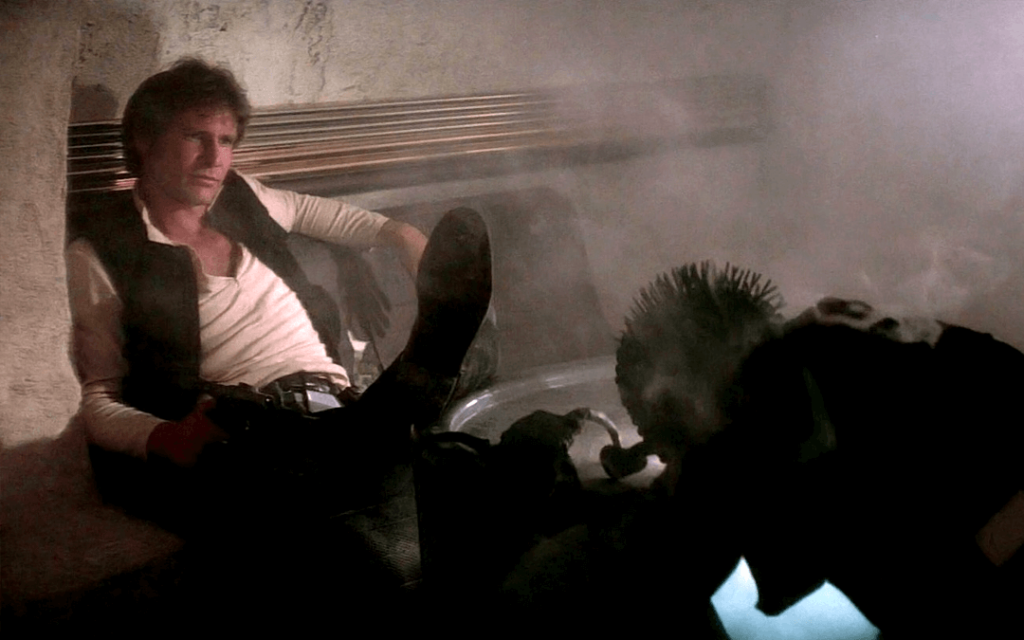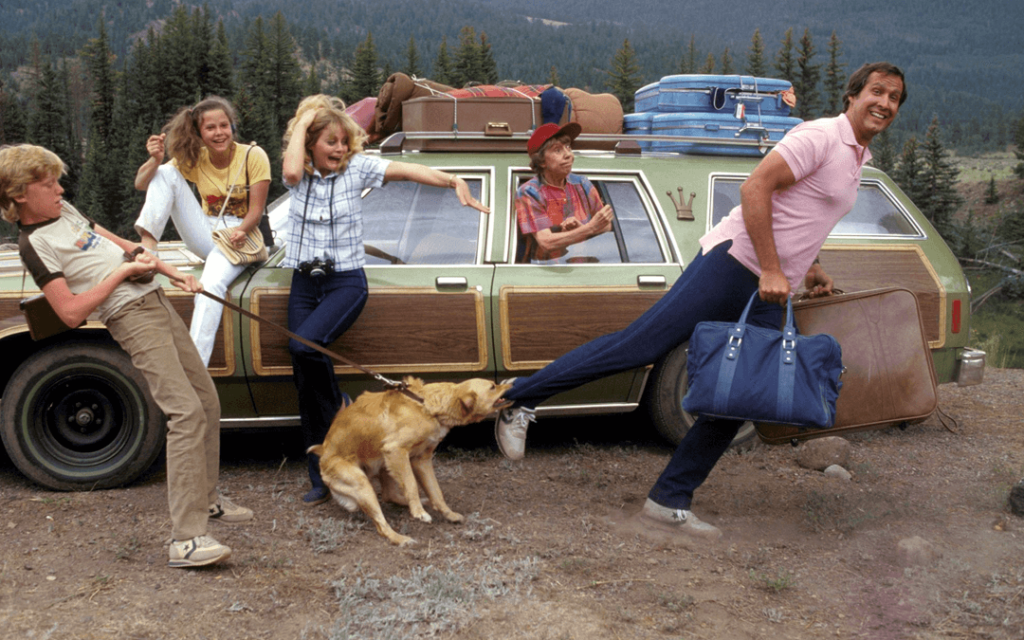Five Things Comedy Writers Can Learn From "Step Brothers"
June 29, 2016
2008’s Step Brothers was written by Oscar-winning screenwriter Adam McKay and the film’s costar Will Ferrell (John C. Reilly contributed to the story). In addition to some classic SNL skits, McKay and Ferrell had previously collaborated on Anchorman and Talladega Nights: The Ballad of Ricky Bobby. Following the commercial and critical success of Talladega Nights, McKay and Ferrell were free to do pretty much anything they wanted with its follow-up.
As a result, they created a tour de force screwball comedy built largely around Ferrell and Reilly’s on-screen chemistry. There was a lot of improvisation from the actors and since the cowriter was also the director, it was a film that was continually molded during production. There are literally hours of cut footage; entire sequences of Ferrell and Reilly riffing off each other. And most of it is pretty hilarious. But just because there was a lot of improvisation and the film relies heavily on absurd humor doesn’t mean it didn’t have a strong foundation. At its heart, the film is about two broken homes attempting to become a whole. It also offers plenty of satire about aging Generation Xers and their refusal to let go of their childhood. Below are five things comedy writers can learn from the film.1.) Hit The Ground Running
The film opens with Ferrell’s character, Brennan, nuking some nachos, Vampire Weekend’s “A-Punk” sounds off, and we’re immediately launched into an epic montage/opening credit sequence. It’s epic because in just a few minutes we learn everything we need to know about the main characters and in quick, entertaining fashion. We see that Dale lives in a state of arrested development and his life is juxtaposed alongside Reilly’s character, Dale (living in a similar state of arrested development). We see how Brennan’s mother and Dale’s father meet, get involved and subsequently get married. We see how Brennan and Dale respond to this marriage (not particularly well). We firmly establish Brennan and Dale’s worldview and can just imagine how these spoiled man-children are going to behave living under the same roof. And finally, as this opening credit sequence reaches its end and the film’s title appears, Brennan and Dale stand across from one another, sizing each other up, now forced into the role of step brothers. In addition to being a nice homage to The Blues Brothers, we already have a great sense of Brennan and Dale’s character dynamic and the film’s through-line. No time was wasted and yet it amazingly didn’t feel rushed. By the time Brennan and Dale are standing across from one another and that title appears, the feeling one gets is “Yeah! It’s On!”
2.) Your Lead Characters Can Behave Horribly Just As Long As They’re Funny
This is a point I made in an earlier article about National Lampoon’s Vacation. Brennan and Dale are not the nicest guys on the planet. Not by a long shot. They’re both the bratty, spoiled, narcissistic Id of every child who throws a temper tantrum. A majority of the film is spent with them screaming and spouting obscenities to not only each other, but to their benevolent parents. Brennan screams and shouts at his own mother, who he lives off without any shame or regret. Both Brennan and Dale relish the way they live. It’s a chosen lifestyle. If this was a drama these guys wouldn’t be protagonists, especially since they don’t even have a redemptive arc. In fact, it can be argued that Step Brothers has the opposite of a redemptive arc. When they finally grow up and become responsible adults it’s presented as “the lowest point” for their characters. When they reinsert their childishness and once again embrace their adolescent lifestyle it’s a heroic moment; they’re staying true to their bratty, spoiled, irresponsible selves. Why do people care about their journey (or anti journey)? Why would people want to watch a grown man scream at his mother? Because it’s laugh out loud funny. Despite being horrible, the audience like Brennan and Dale because they’re being entertained by them.
3.) Your Lead Characters Can Be Absurd Just As Long As Your Supporting Characters Aren’t
This is another point I made in my Vacation article, but it’s taken to an extreme in Step Brothers. Although the notion of two middle-aged men still living at home with their parents isn’t as absurd as some people might think, Brennan and Dale are definitely absurd characters. Their absurdity, however, is offset by their mother and father (portrayed by Mary Steenburgen and Richard Jenkins). Not only because of Steenburgen and Jenkins’ grounded performance, but their characters are also written more seriously. They’re the perpetual “Voice of Reason” in the madhouse (Ellen and the Griswold kids played a similar role in the original Vacation). Not only does this help ground the story on a whole and make the viewer more invested in the world, it utilizes the well-tested comic trope of “The Straight Guy”. The disastrous job interview sequence also makes use of this technique: Brennan and Dale are contrasted by a succession of grounded characters that are bewildered by their antics. Now there are some supporting characters that give Brennan and Dale a run for their absurd money (e.g. Brennan’s brother, Derek, and his wife, Alice), but there’s enough of a balance in the absurd/grounded ratio to make room for them.
4.) Conflict. Team-Up. Stronger Conflict. Stronger Team-Up.
People love it when two characters have a throwdown. From comedies to action films, “This Guy Versus That Guy” is an engaging formula, especially when both characters are protagonists. Batman versus Superman. Captain America versus Iron Man. Brennan versus Dale. It keeps you on your toes and causes you to constantly switch loyalty. Step Brothers might have even created a specific subgenre: The One-Upmanship Block Comedy. This meaning a comedy that largely takes place on a suburban block and two or more characters are trying to one-up the other. Neighbors and Daddy’s Home are two recent examples. What’s great about Step Brothers is it double downs in this regard. First, Brennan and Dale are rivals and trying to one-up the other. Then after an incident with Brennan’s bully brother, Derek, the two of them bond and become best friends. The film then shifts from an One-Upmanship Comedy to a Buddy Comedy. Brennan and Dale look for jobs together, they butt heads with their parents together, they start a business together, etc. But then at the end of the Second Act, Brennan and Dale have a classic Buddy Split Up and sadly are at odds again. This sets up a triumphant reunion when the two save the Catalina Wine Mixture.
5.) Have A Catalina Wine Mixture Type Set Piece In Your Third Act
The climax of a comedy, especially a Block Comedy, should be at some kind of event, party, or local contest where all the characters are present. This not only gives the film something to build towards, it enables the writer to easily tie up several plot-lines at once. Just look at all that’s resolved at this single set piece in Step Brothers: Brennan and Dale become best friends again, reclaim their identities and save the day; their parents get back together after splitting up and learn to accept their children; Brennan finally wins his brother’s approval; and Dale ends his affair with Alice. This all happens at the Catalina Wine Mixture. In many 1980s comedies big parties were often the final set piece. This could still work today. Whatever the occasion, it always makes sense to create an event in which all your characters have to interact and all their issues come to a head. It will not only give you further opportunities for comedy, it’ll give the dramatic narrative closure.
Written by: Edwin Cannistraci
Edwin Cannistraci is a professional screenwriter. His comedy specs PIERRE PIERRE and O’GUNN both sold with more than one A-list actor and director attached. In addition, he’s successfully pitched feature scripts, TV pilots and has landed various assignment jobs for Universal, Warner Bros, Paramount and Disney.- Topics:
- Screenwriting & Craft




